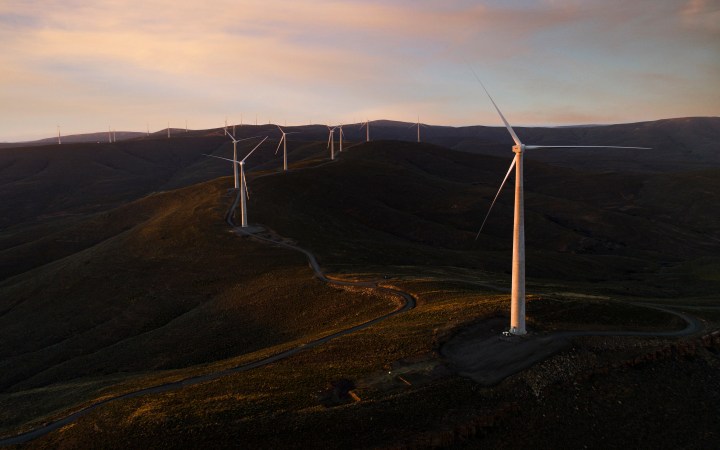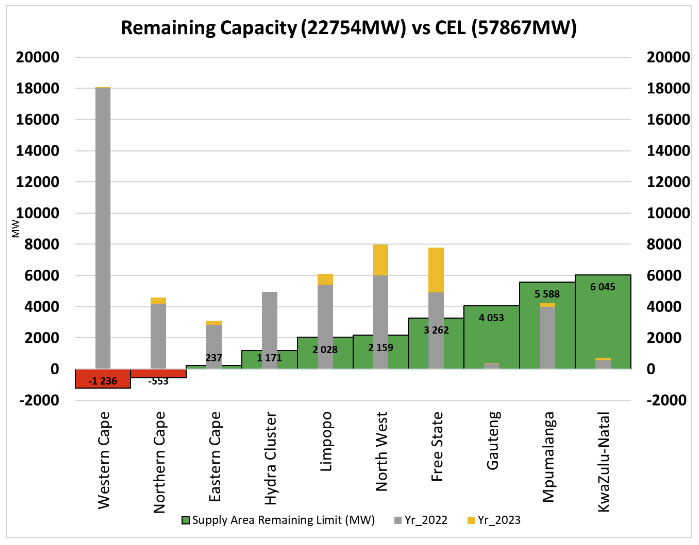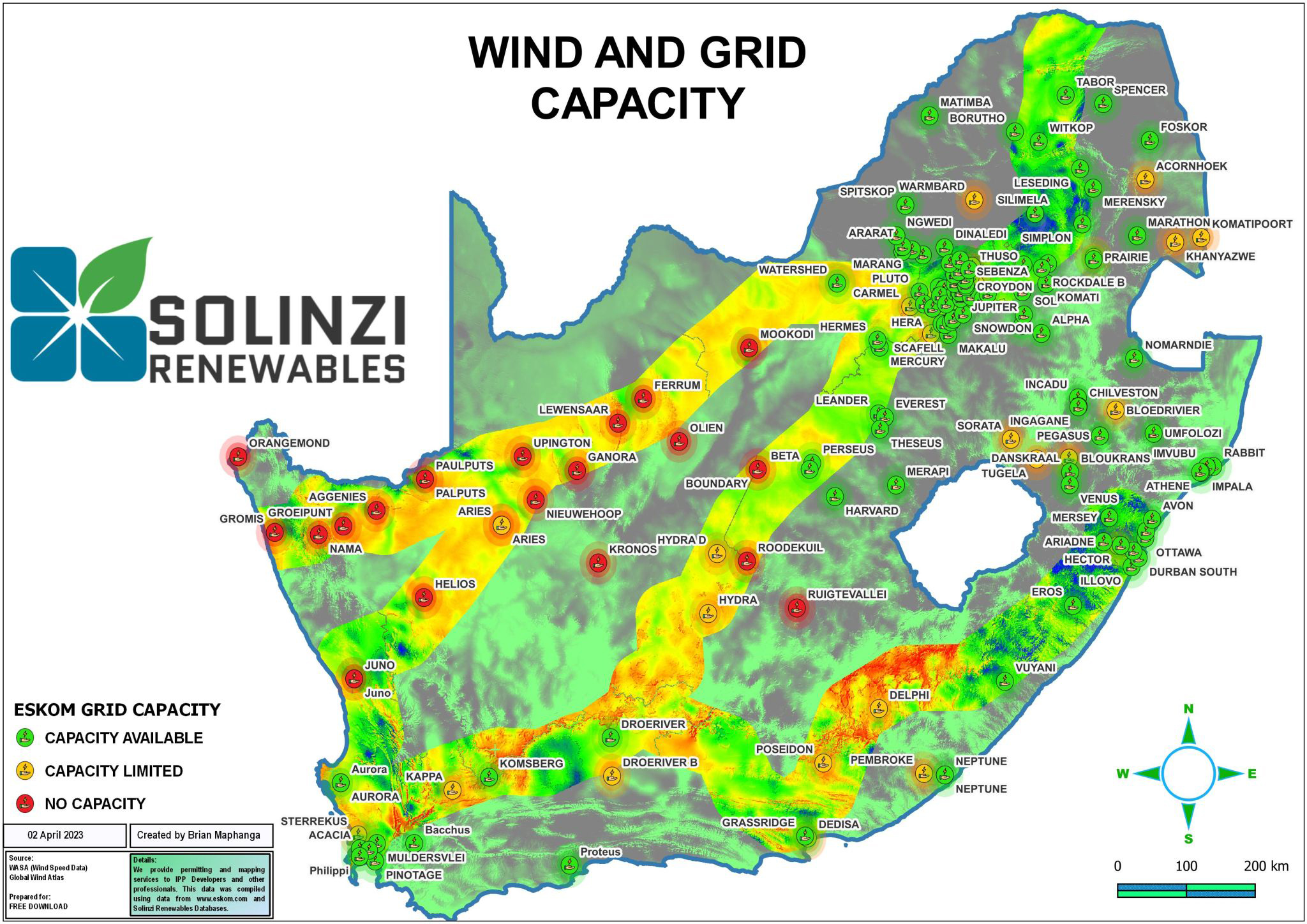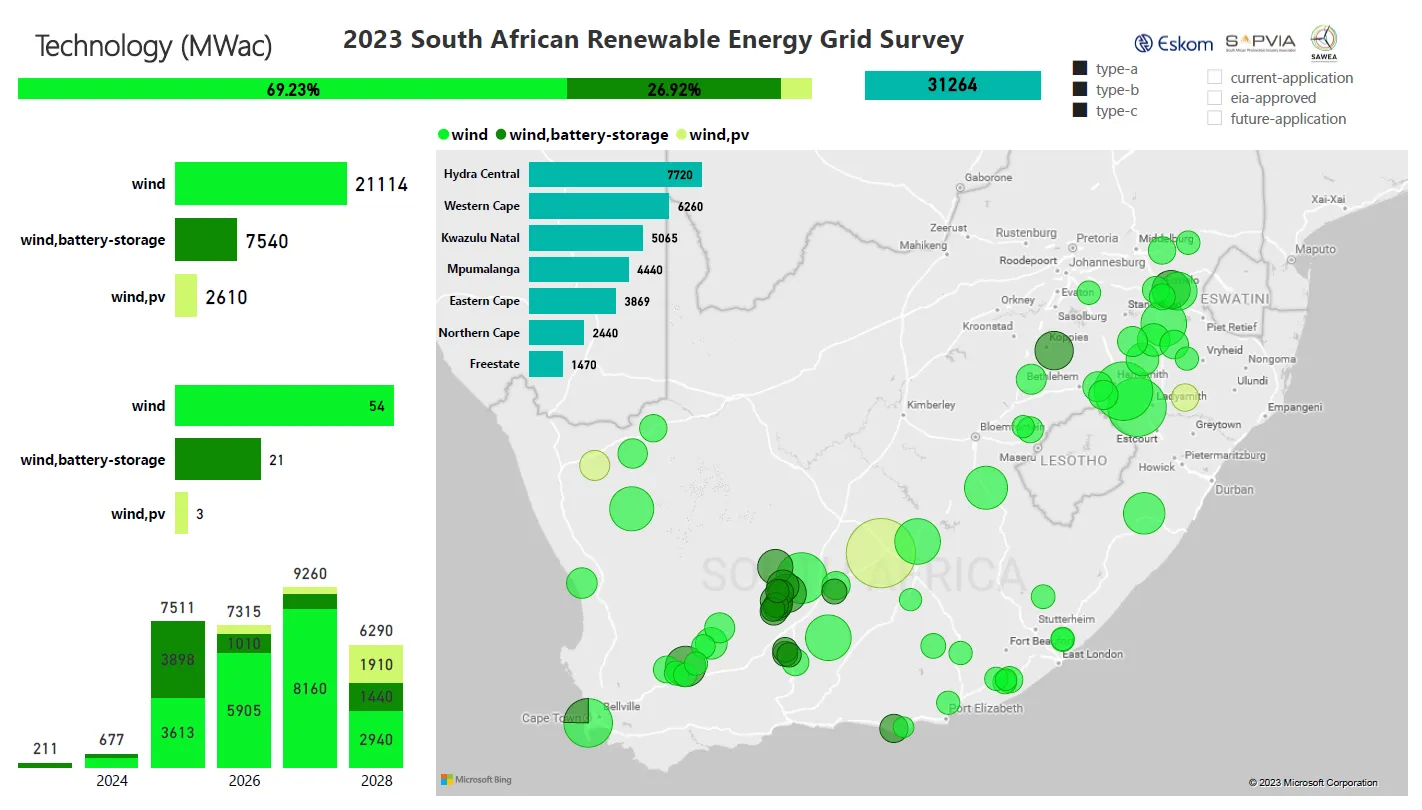POWER CRISIS
‘Effectively on ice’: Grid capacity constraints jeopardise some renewable energy projects

As South Africa ramps up its roll-out of renewable energy, it is now confronting the same challenge faced by countries across the globe. Depleted grid capacity in resource-rich areas is making it increasingly difficult to connect new renewable energy projects to the grid, particularly in the Northern Cape, Eastern Cape and Western Cape.
‘The simple truth stands that if there is no grid capacity in the country, there is no more renewable energy and there is no future for renewable energy. This will continue to cripple the energy system and our economy.”
These were the words of Niveshen Govender, CEO of the South African Wind Energy Association (Sawea), after commemorating Global Wind Day during a panel discussion hosted in Cape Town on 15 June by renewable energy company Red Rocket.
Govender referred to the recent Renewable Energy Grid Survey released by Eskom, Sawea, and the South African Photovoltaic Industry Association earlier in June 2023, indicating there would be around 30GW of wind energy projects in various stages of development across the country over the next 10 years – increasing tenfold SA’s current installed wind energy capacity of 3.4GW.
This 30GW of wind energy is part of a total of 66GW of renewable energy projects in the pipeline.
Sawea believes there is massive potential for wind energy, with South Africa now considering the feasibility of offshore wind and wind-powered green hydrogen production.
Govender said: “This increases the South African potential for new wind generation to more than 100 [GW] in the next 10 years. On Global Wind Day, it is important that we encourage governments, businesses and individuals to invest in wind, support research and development, and embrace policies to accelerate the deployment not just in South Africa, but globally.”
However, the biggest stumbling block remains the depleted grid capacity to connect new renewable energy plants in resource-rich areas around the country.
Depleted grid capacity
According to Eskom’s current Generation Connection Capacity Assessment (GCCA), grid capacity in the Northern and Western Cape is fully depleted, while the Eastern Cape has worryingly low grid capacity.
There are variations of available capacity in each of the other provinces, with a total remaining grid capacity of about 22,754MW.
Grid access requires independent power producers (IPPs) to apply for a cost estimate letter – this provides a good indication of the interest in grid access in each province. Eskom said the interest in each province currently exceeds grid capacity, except for Gauteng, Mpumalanga and KwaZulu-Natal.

Eskom’s Transmission Development Plan 2023-2032 is aimed at supporting grid expansion for both public and private IPP projects, which is aligned with the amount of renewable energy that needs to be connected. However, Govender said the timelines didn’t seem to align.
Read more in Daily Maverick: Mega bid window to be released to market in June — but SA’s big challenge is grid capacity, says electricity minister
He said although there was a strong policy framework to support the roll-out of renewable energy, and wind energy specifically, they continued to choke on implementation.

A map showing wind availability and grid constraints. (Graphic: Solinizi Renewables / Brian Maphanda
Grid congestion is not unique to South Africa – several countries are facing the same problems – but perhaps the pressure to address this is felt more urgently in South Africa as daily rolling blackouts continue to damage all sectors of the economy.
Brian Cunningham, commercial and industrial (C&I) development manager at Cape Town-based IPP Red Rocket, said: “The grid constraints currently are in the Northern, Eastern and Western Cape and a huge amount of renewable projects now are effectively on ice until the grid can be resolved.
“Unfortunately for Eskom, they do not know which projects are going to be successful or not, and it’s challenging to try to resolve the whole grid (in all the regions at the same time).
“It’s my opinion that more than likely, things will move to a stage where IPPs are going to resolve the grid constraints through co-creation with Eskom and potentially with large C&I clients.”
Although there are severe grid constraints, the interest in developing wind energy projects is higher than ever. Cunningham said many new wind projects were being developed in areas where the grid wasn’t constrained.
IPPs are moving out to the less windy areas.
“If there’s no grid capacity in the country, then we’re all in a difficult position, but the IPPs are very good at finding solutions and we can do that in partnership with Eskom.
“As Red Rocket, we’re always in discussions and looking for solutions with the IPP office within the Department of Mineral Resources and Energy to find novel ways to unlock the grid, in partnership and as a team effort,” he said.
Eskom spokesperson Daphne Mokwena confirmed that the power utility is preparing to issue updated grid queuing rules to better manage limited grid connection capacity in Eskom’s Interim Grid Capacity Allocation Rules document.
“The rules are developed to allocate grid capacity to projects that are shovel-ready, thereby avoiding the hogging of capacity. Eskom has plans, such as the Transmission Development Plan 2023-2032, to support the grid expansion for public and private IPP projects.
“The GCCA 2025 will be used to support the confirmation of available grid capacity (including onshore wind projects),” Mokwena said.
In the sixth bid window of the Renewable Energy Independent Power Producer Procurement Programme, no new wind generation was procured, and, according to experts and stakeholders in the industry, this was directly due to the fact that grid capacity had been taken up in the Eastern, Northern and Western Cape and no new projects could be allowed in these areas without further studies.
In response to questions from Daily Maverick, Eskom said: “The large volumes of capacity for renewables exceeds the local network capacity and many new long-distance lines are required. This is detailed in the Transmission Development Plan 2023-2032, which expands the grid capacity connection to 44.6GW by 2032.”
Council for Scientific and Industrial Research senior energy researcher, Monique le Roux, said these areas are the best wind resource locations in the country and are where most wind development has taken place.
“More development of wind power projects has taken place in other provinces recently as there is more grid capacity available, but there are definitely questions around the viability of these projects and the cost of wind power produced by these projects due to the low wind resource in these areas,” she said.
According to Le Roux, generation from renewable energy can be constructed fairly quickly and it will therefore remain one of the best new generation sources to resolve capacity constraints and help to alleviate the electricity crisis.
Short-term solutions
There is growing pressure on government for more short-term grid optimisation solutions to be considered to open up grid capacity in the near future and address the immediate problem.
Le Roux said: “The most probable short-term solution would be to have agreements with renewable generators to curtail some of their power during peak generation periods so that transmission lines are not overloaded.”

A map from the 2023 South African Renewable Energy Grid Survey (conducted in partnership with Sawea, Sapvia and Eskom) showing the projects being developed in the wind industry as well as which projects are combined with battery storage and the timeline for completion. This information will be made available as an interactive map on Eskom’s website soon. However, it is currently available on Sawea’s website. (Graphic: Sawea)
Eskom could also look at the rollout of battery energy storage systems or fast-track transmission grid upgrades. But an updated Integrated Resource Plan (IRP) is crucial in identifying the least-cost generation options so that planning can happen accordingly, rather than taking a shotgun approach and just hoping that the least-cost option is being implemented, potentially wasting billions of rand.
Le Roux delved into the root causes of the grid constraints and explained that the South African grid was originally designed around large coal-fired power stations that generated power centrally in the north of the country. This power was then transmitted via high-voltage lines to customers in the southern parts.
However, there is now a reverse in power flow, where power is generated in the south of the country where renewable energy resources are more abundant, and then transported to the north where most of the electricity users live.
“These transmission lines have a limited capacity and at present, when all the approved wind and solar generators in the Northern, Western and Eastern Cape are generating at maximum capacity, the lines can become overloaded trying to export the power in these areas.
“The lines have thus reached their thermal limit and any additional generation that is added can cause the lines to overheat, thereby damaging the power lines,” she said.
To facilitate the roll-out of large-scale renewable power generation, investment and upgrades of the transmission network will be necessary. This issue is being encountered globally where countries have invested in renewable energy and have had to scale back on those plans due to transmission grid constraints.
“This is one of the hidden costs of renewable energy generation that is not properly accounted for and planned for and was not included in the IRP 2019 – it is going to increase the cost of renewable energy considerably in future,” said Le Roux. DM
To read all about Daily Maverick’s recent The Gathering: Earth Edition, click here.




















 Become an Insider
Become an Insider
This is hardly a new problem or unforeseen, but no major grid expansion has been planned or budgeted. The amount of inaction on this is staggering.
At the very least the negotiations for the servitudes and EIA’s should be started and priortised.
You’d hope that the WC take matters into their own hands and at least plan for that province.
More fiddling while Rome burns.
What about switching these renewable energy projects from electricity generation to green hydrogen products? Using renewables to produce hydrogen doesn’t require access to transmission lines if the hydrolysis happens on site.
I realise that this doesn’t solve the immediate problem of load shedding but for those who have identified sites to develop and have permission for renewable power generation, it seems to make sense to start capturing that energy sooner rather than later. I’ve seen estimates of 30-60% CAGR for the green hydrogen market.
Ask yourself who controls this and whose vested interests are being protected and the answer stares you right in the face. This is no less and no better than another form on the insidious state capture.
The when, the where and the how much of the power supply and demand are all equally important. The power lines in Northern Cape are fully committed, not depleted.
Cyril Ramaphosas ten point plan should get a point 11 for new power transmission toward eg Gauteng and a point 12 for energy storage.
“Grid access requires independent power producers (IPPs) to apply for a cost estimate letter”
Not good enough. It is evident that the bid requests did not specify requirements for grid connectivity and grid capacity at connection points. The inclusion of this would have the effect of prioritizing IPP sites nearer to available grid capacity.